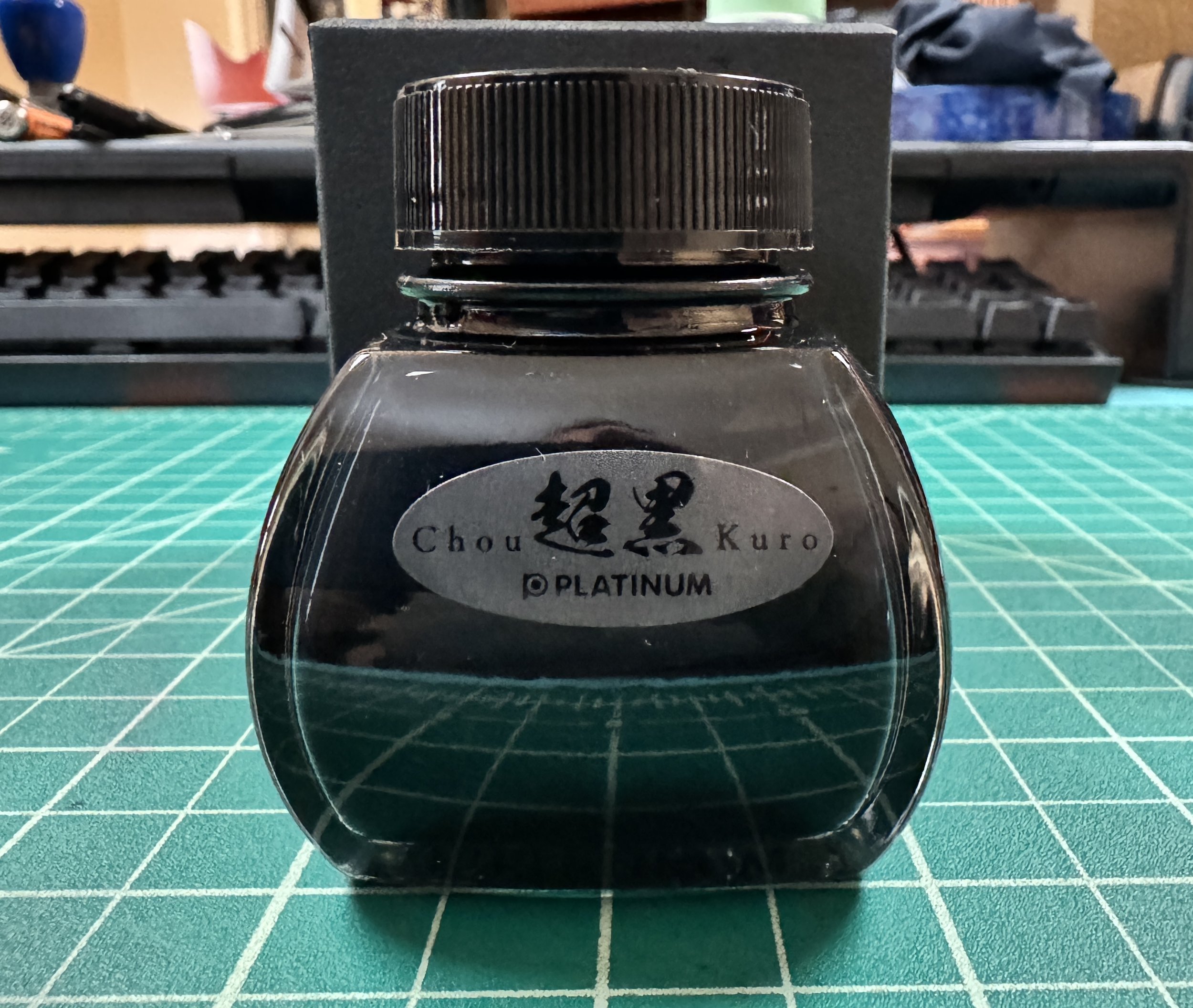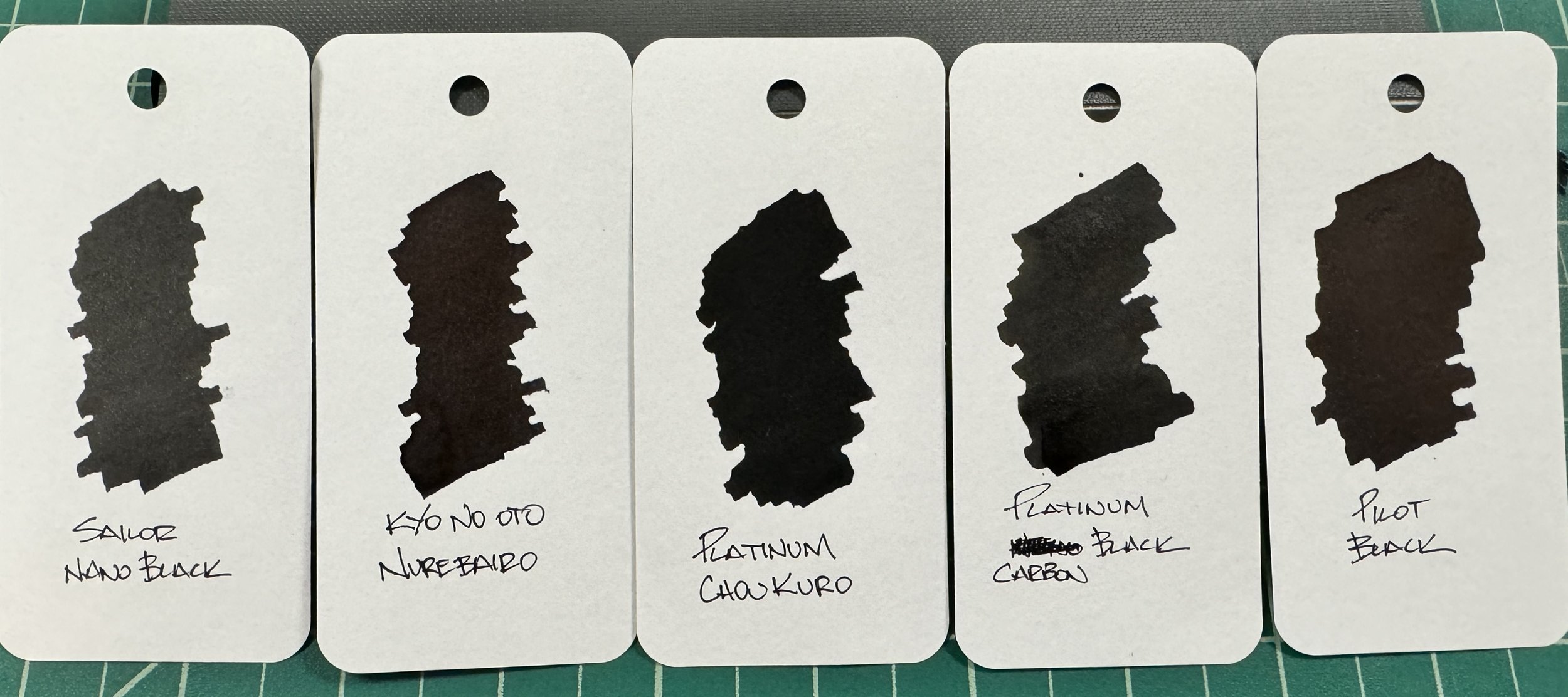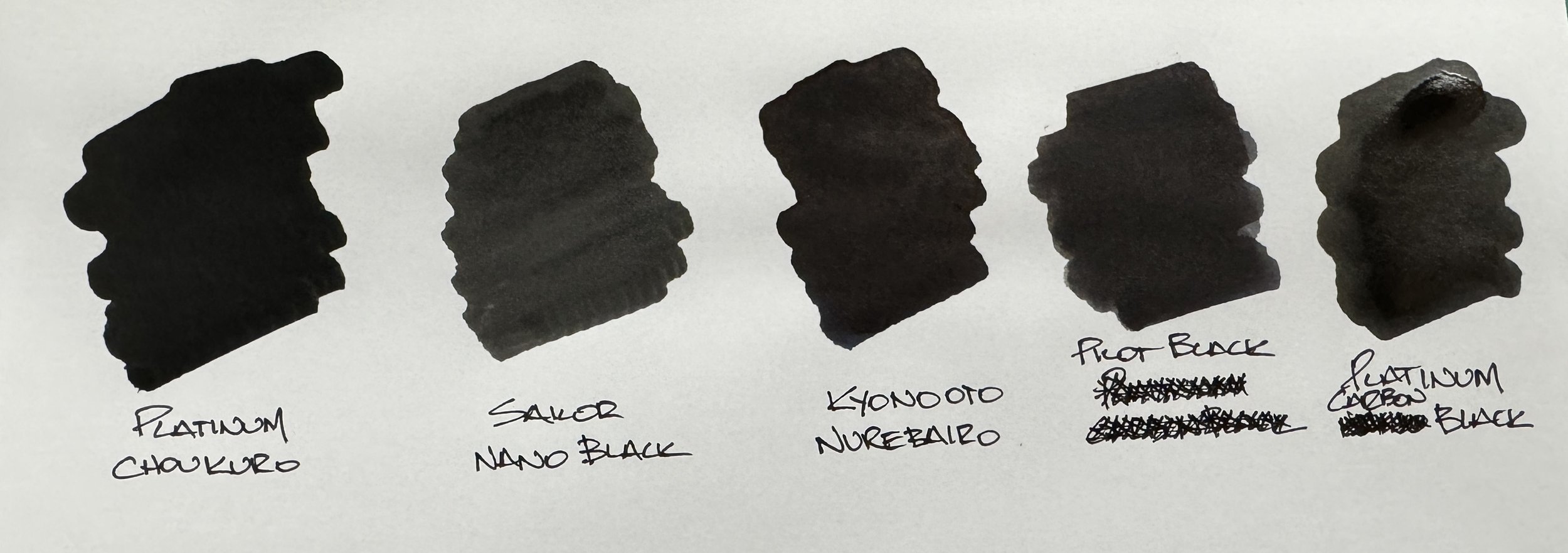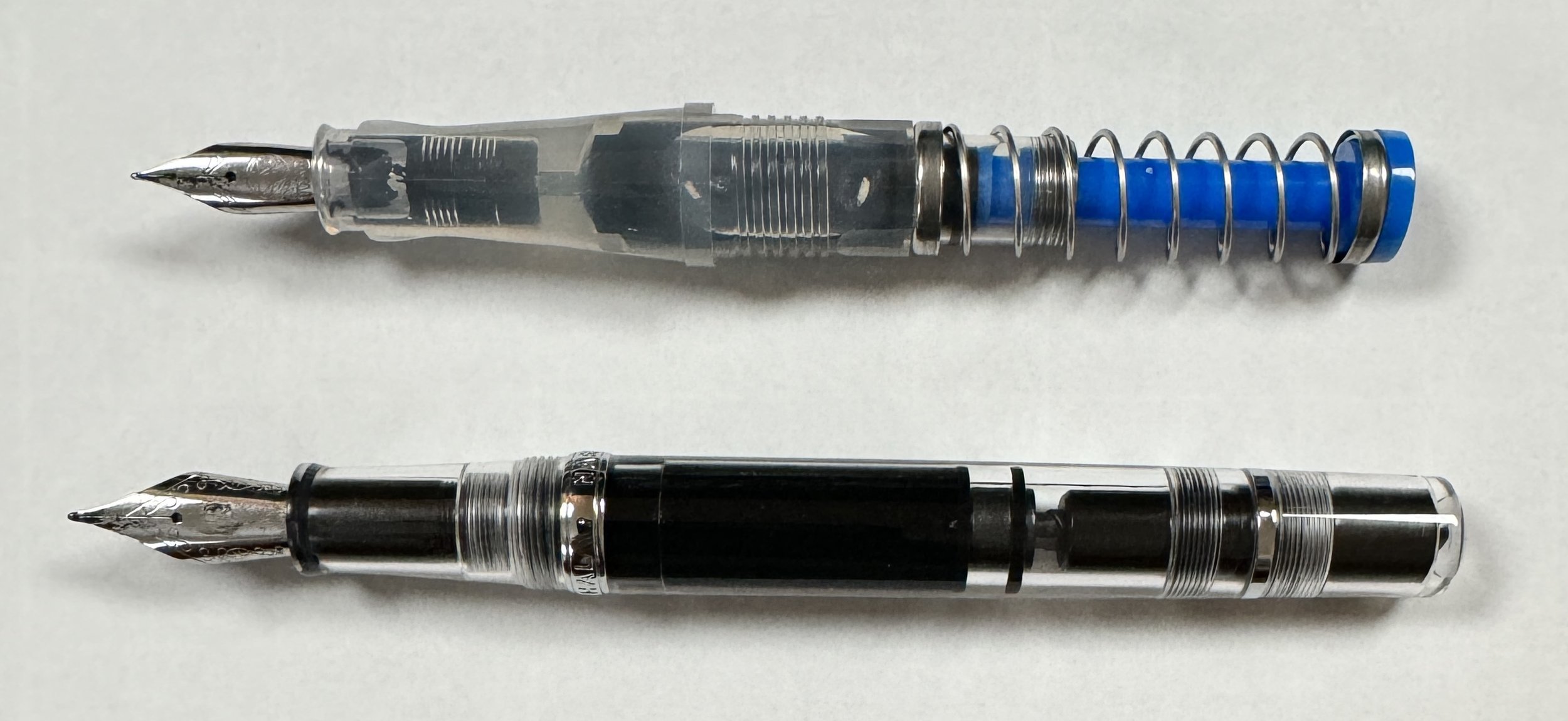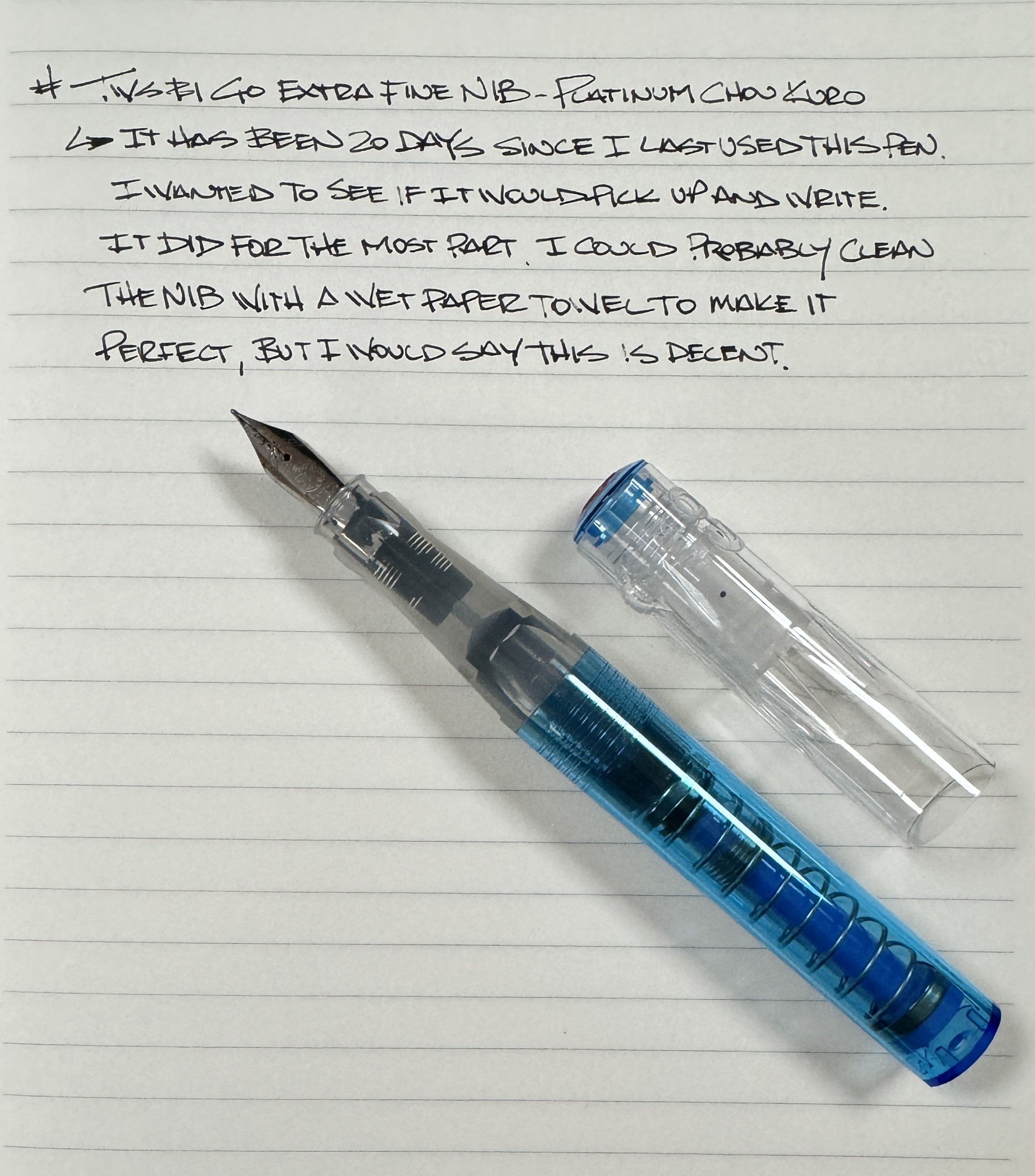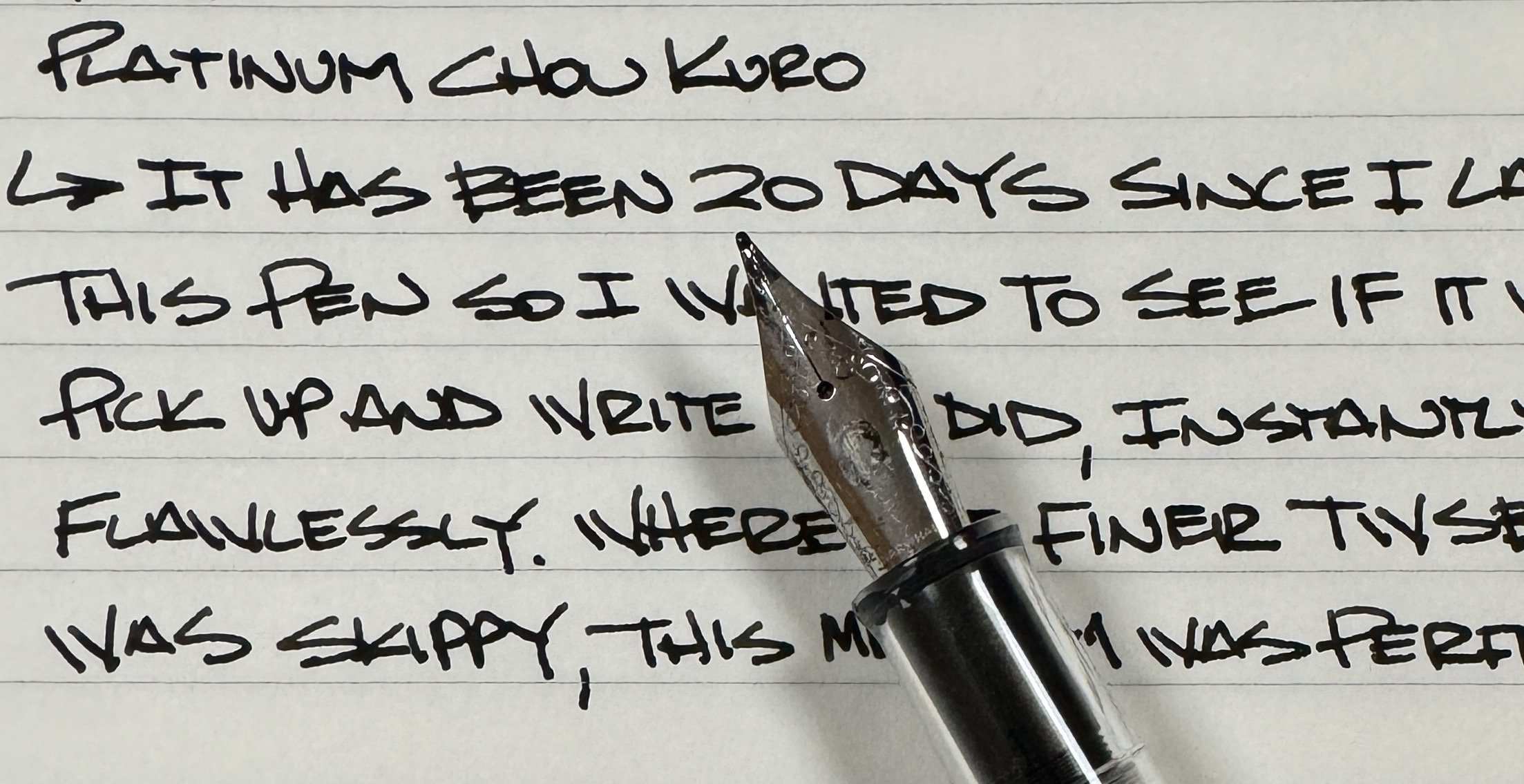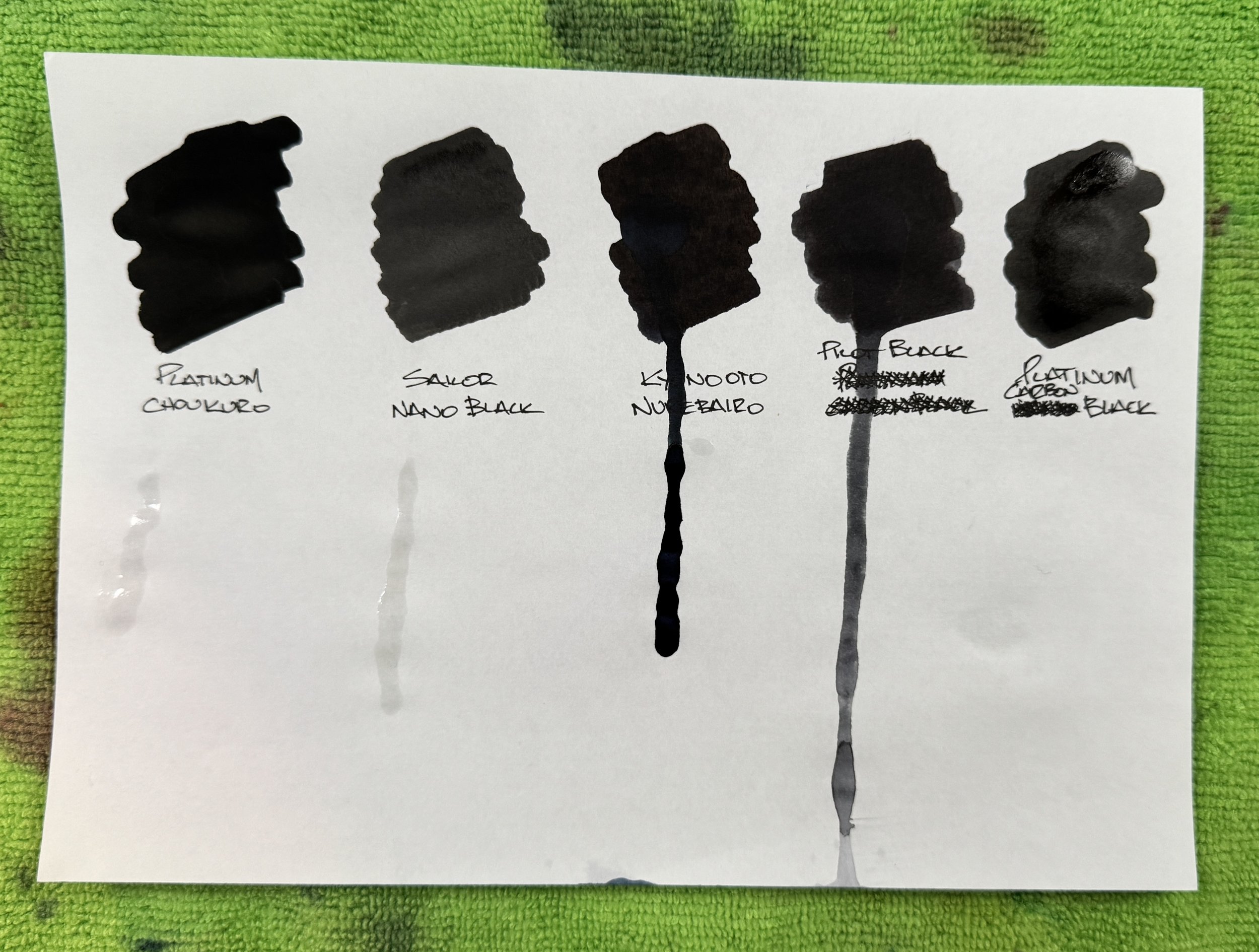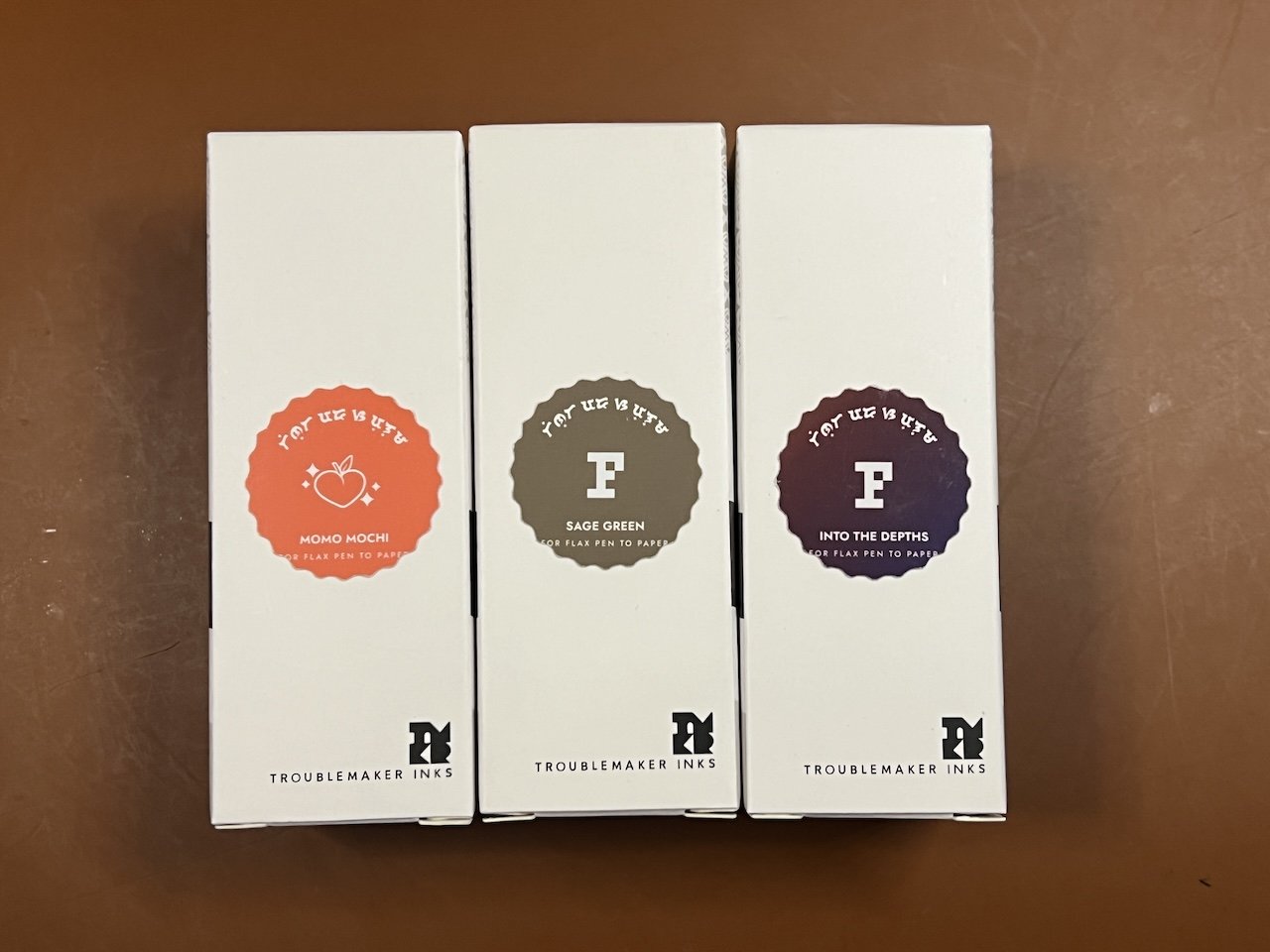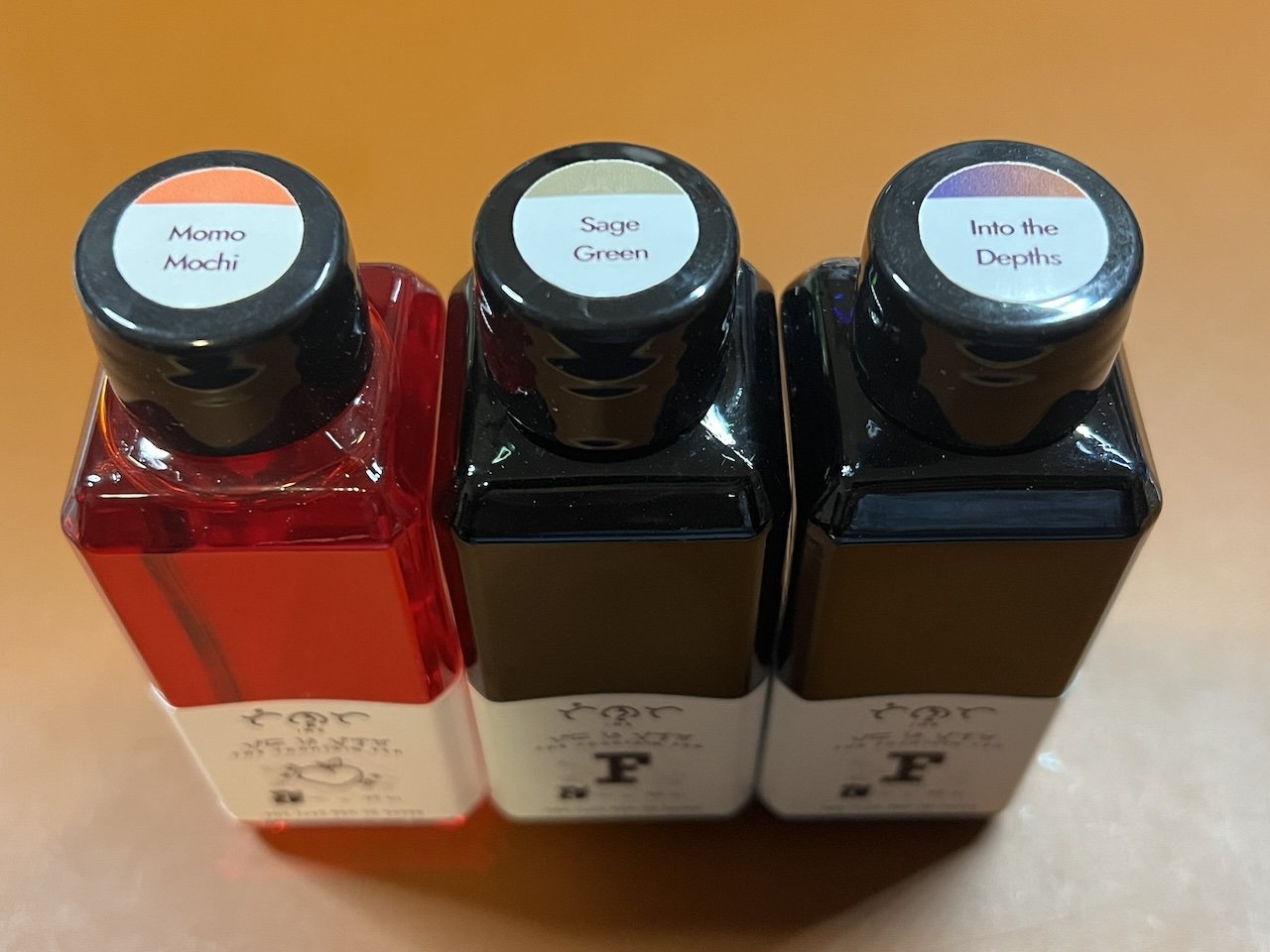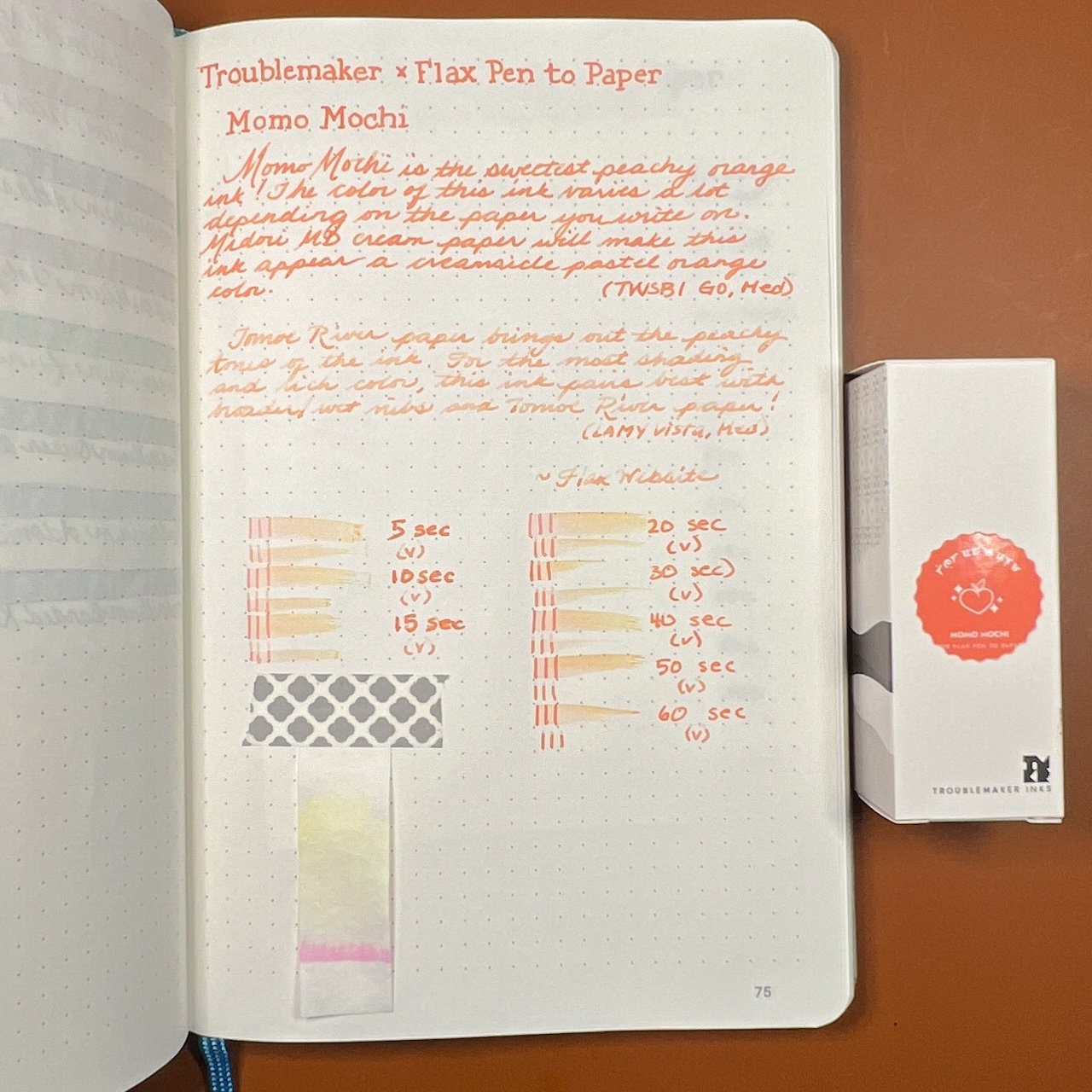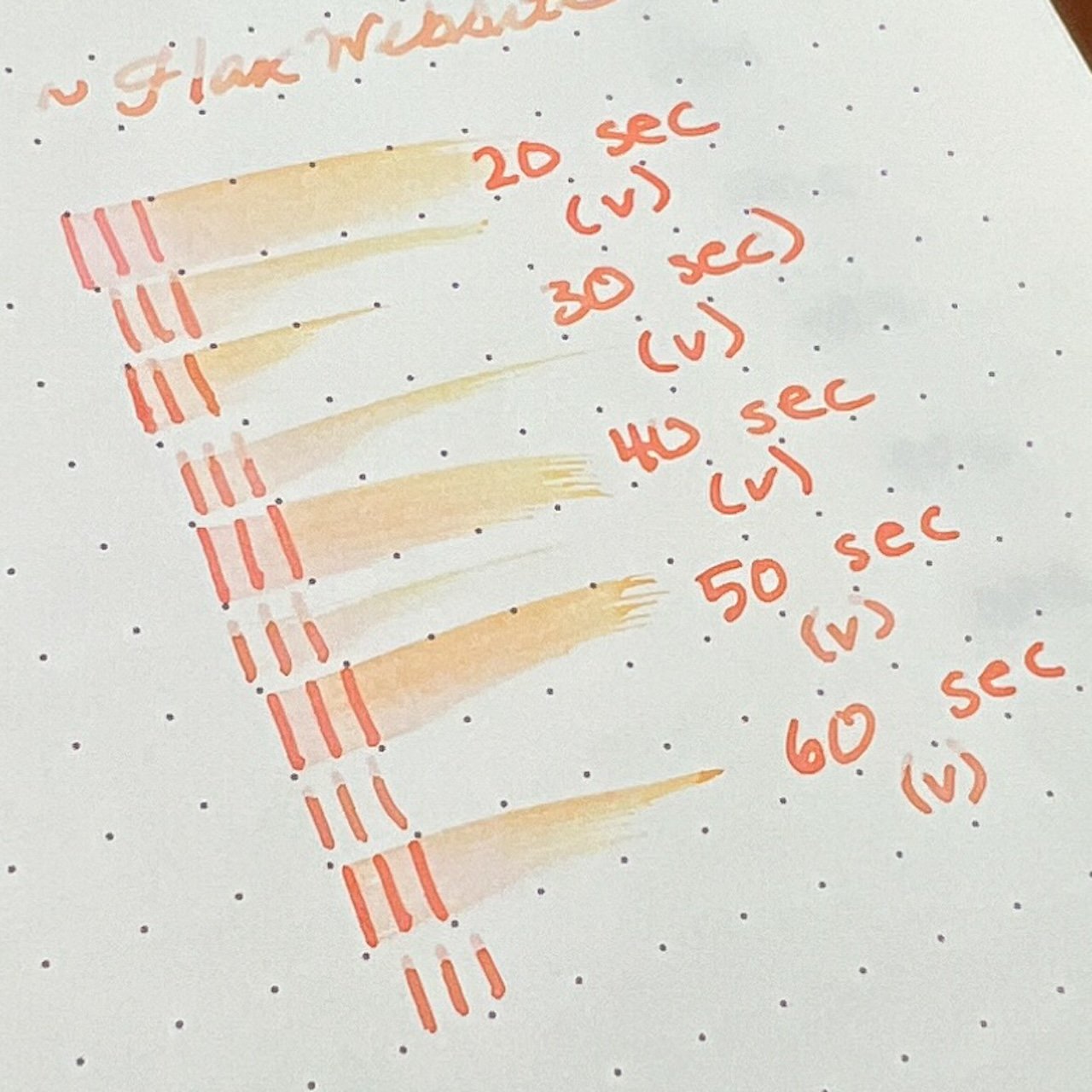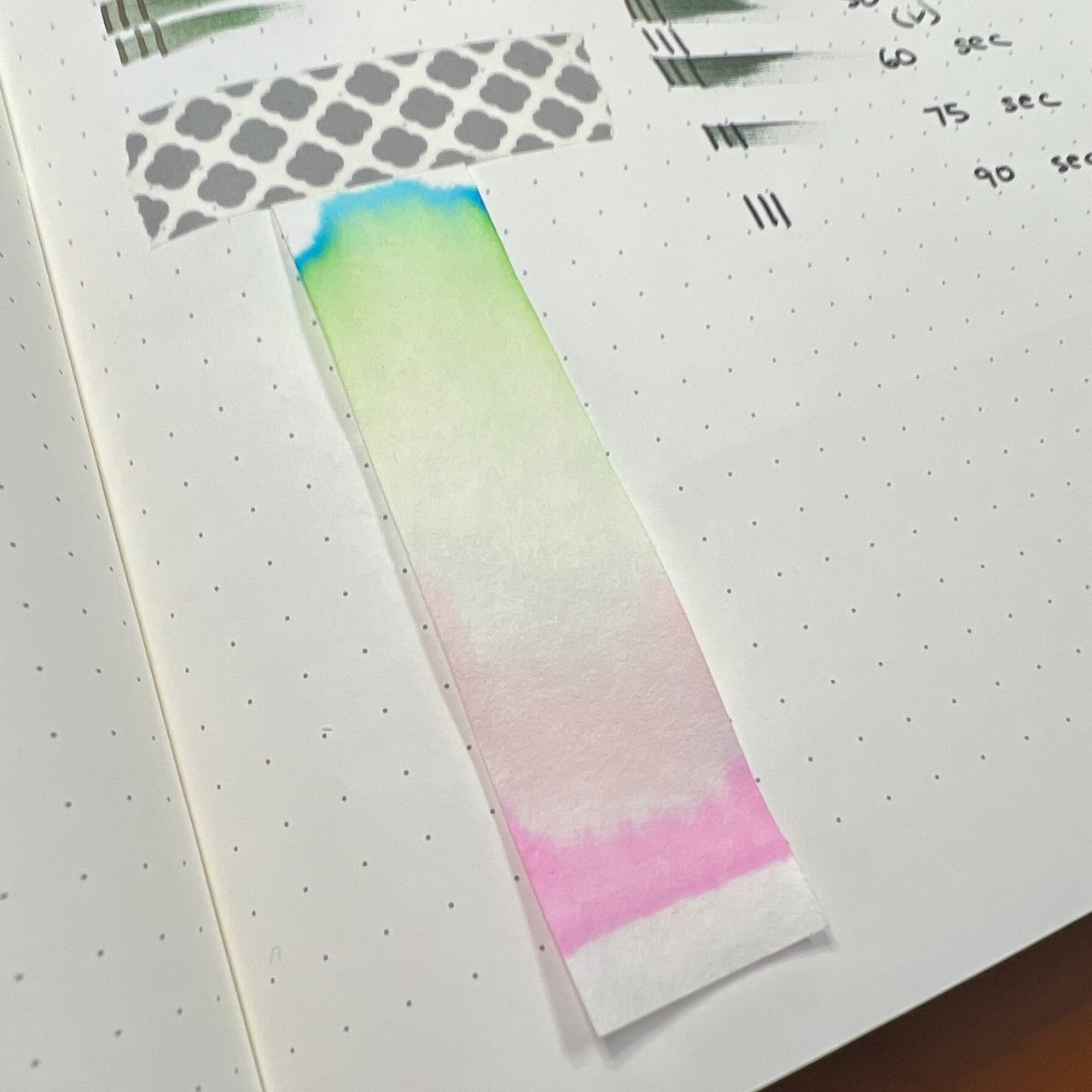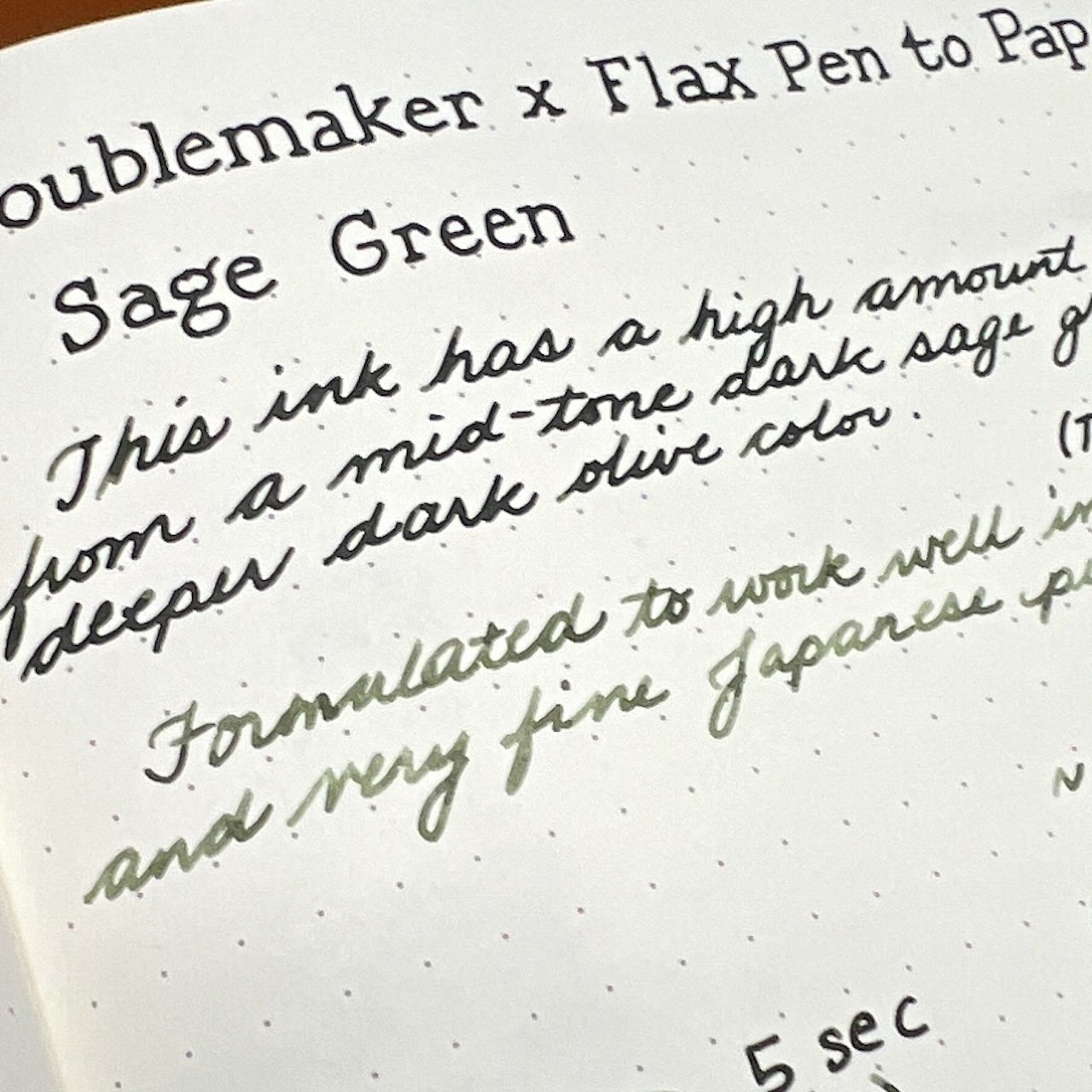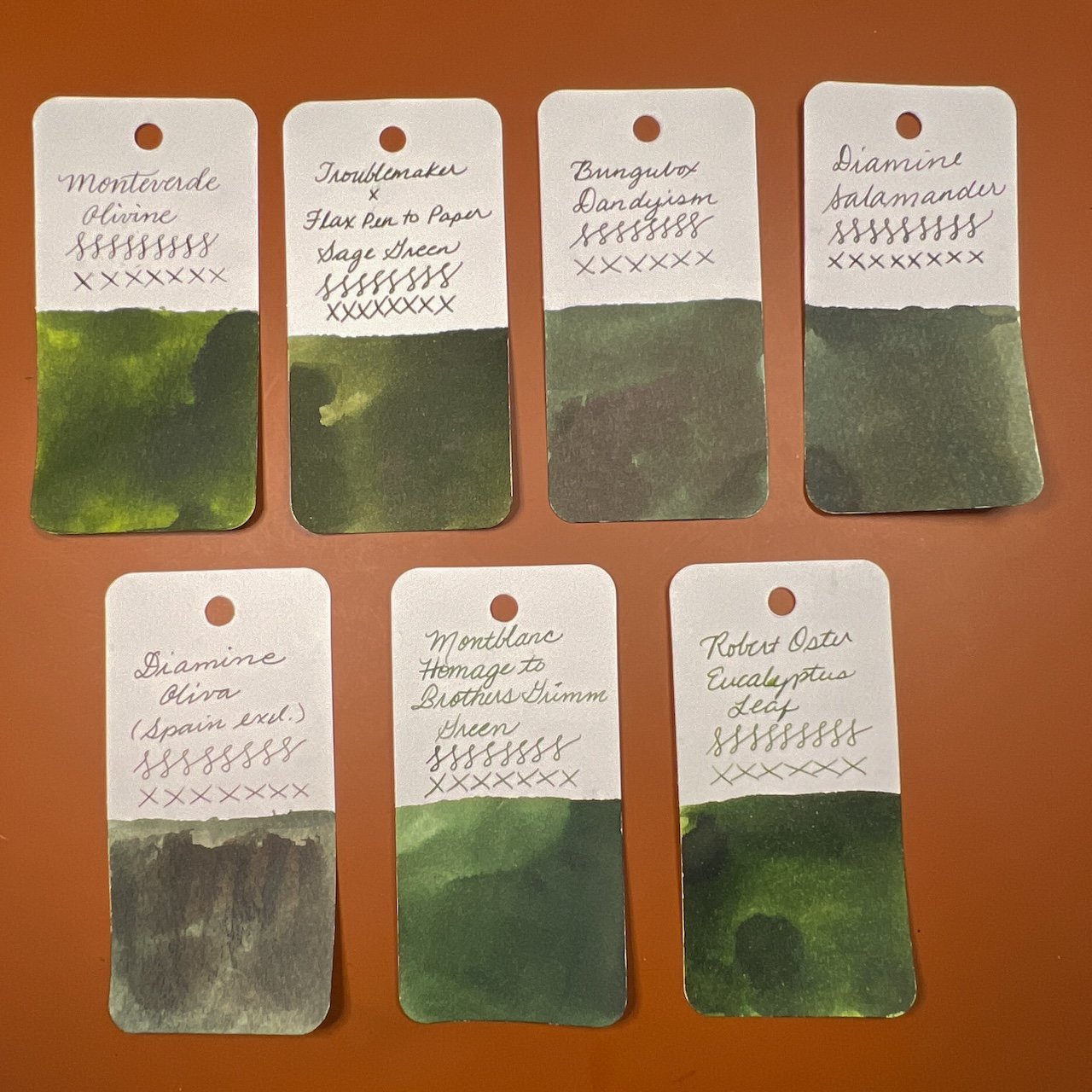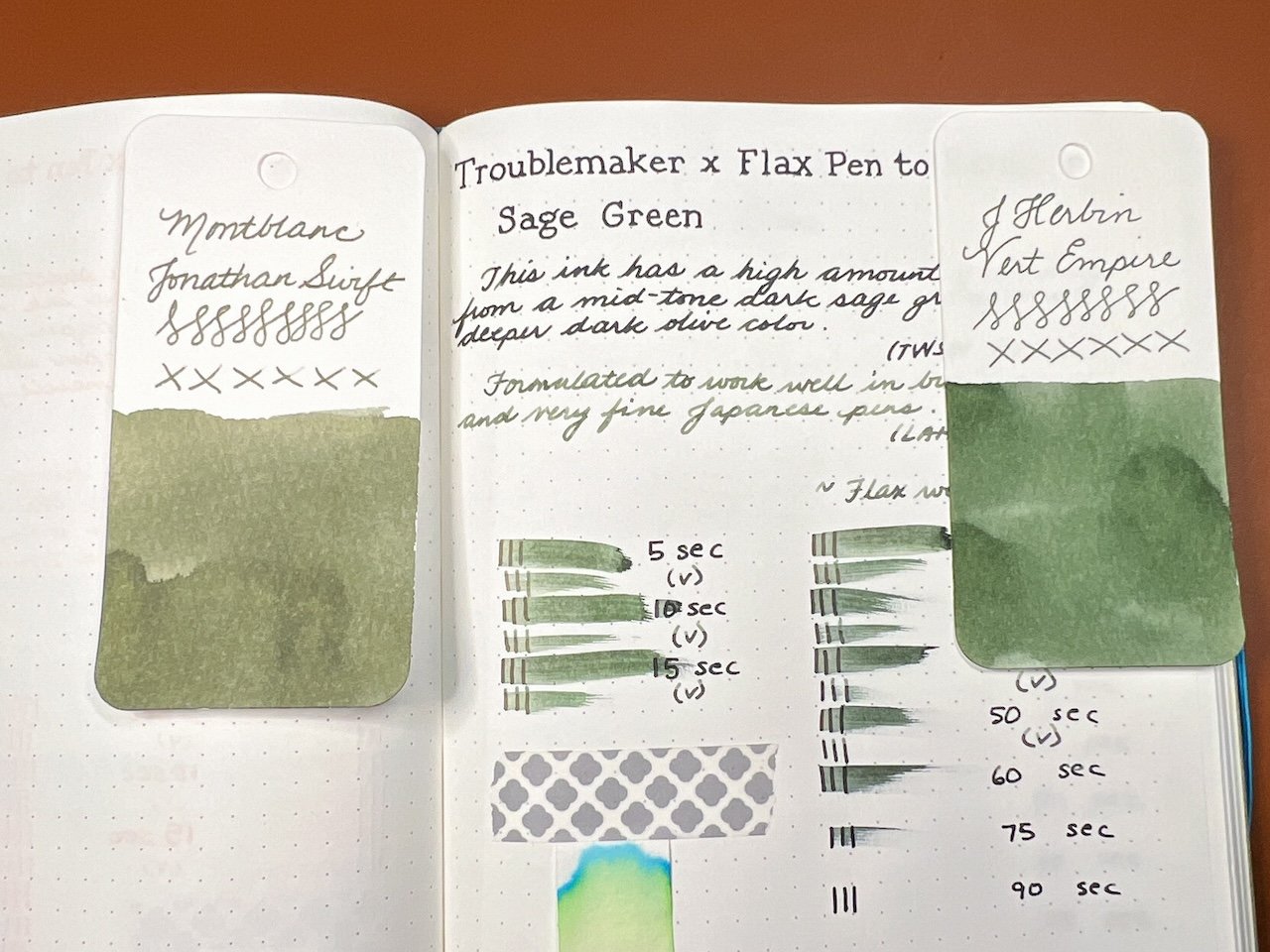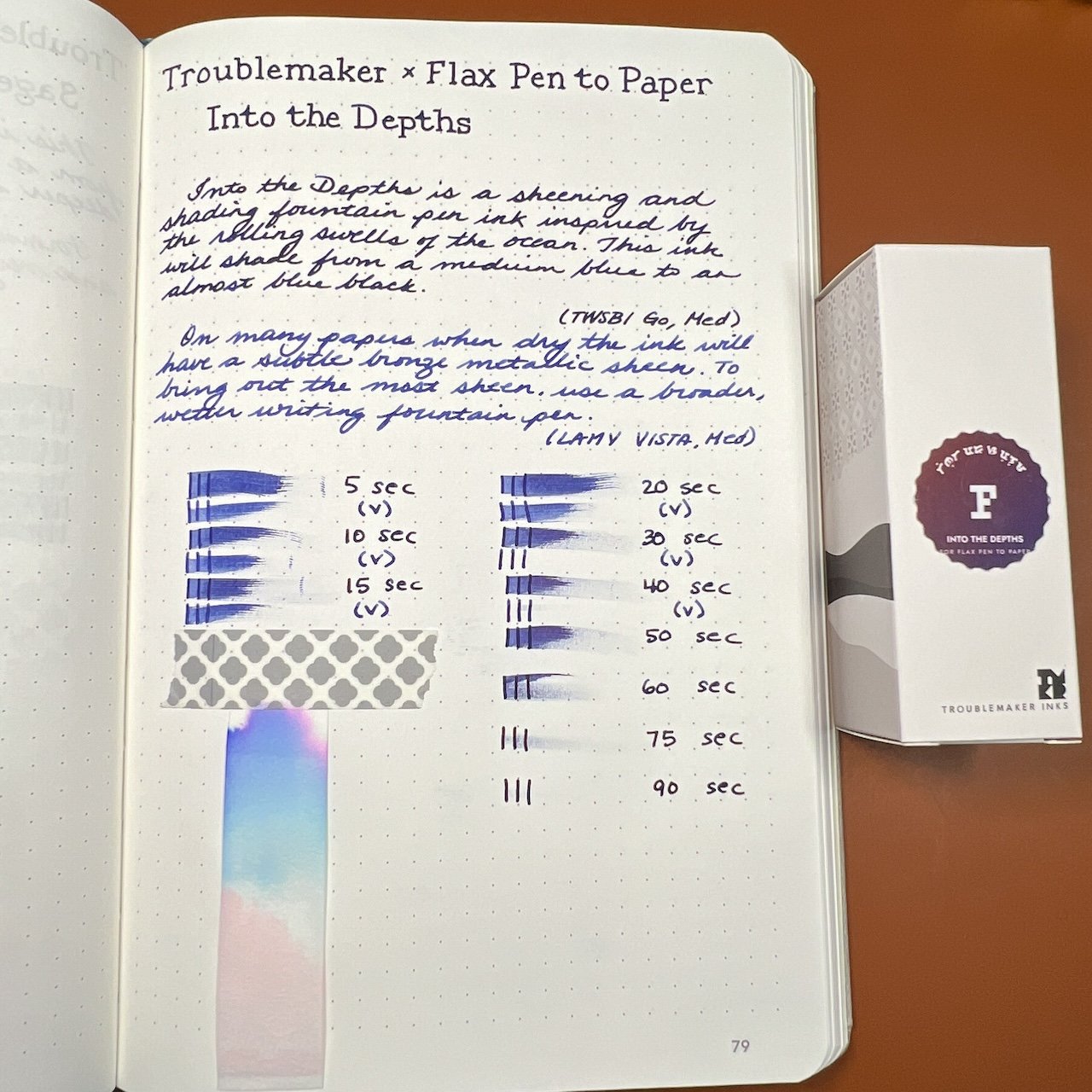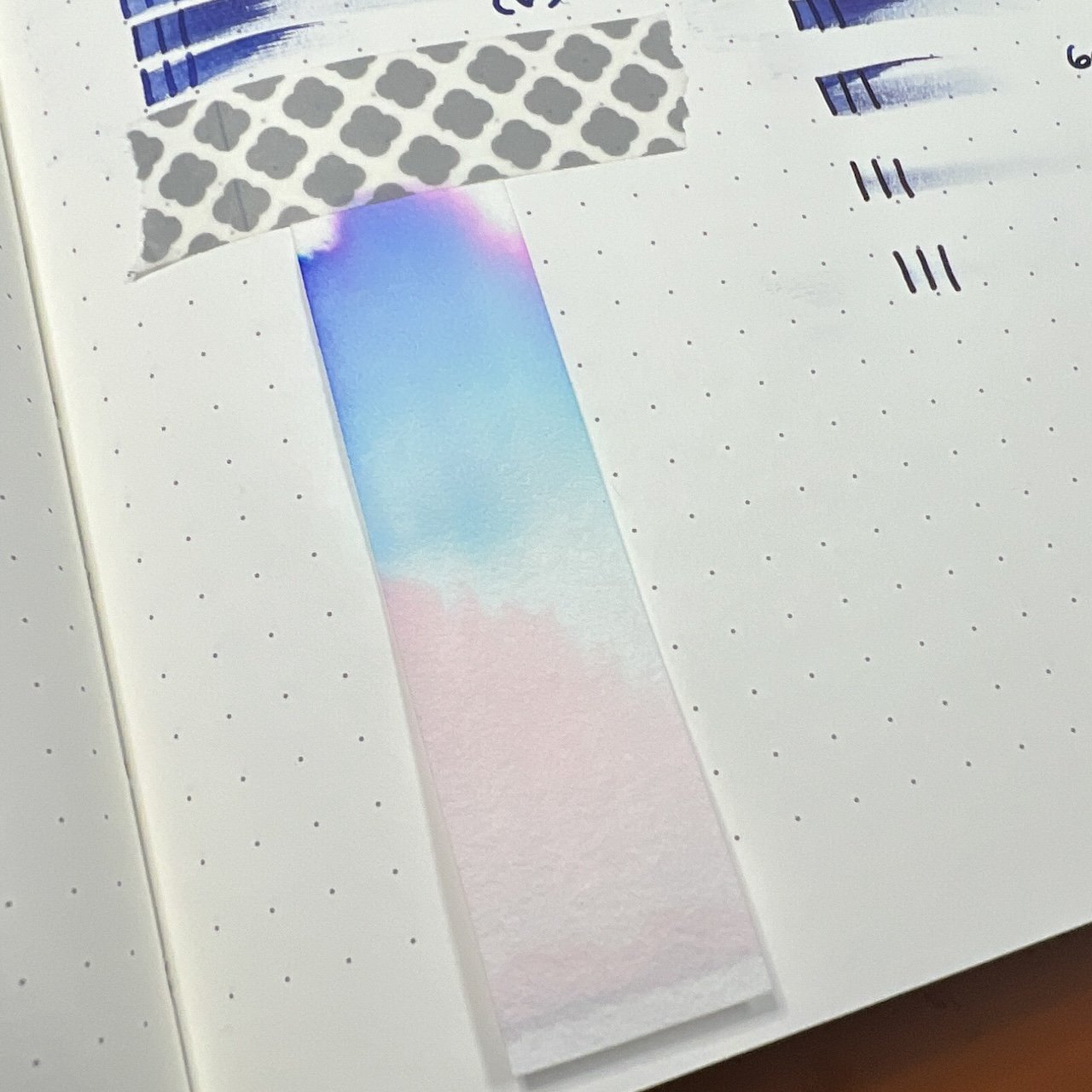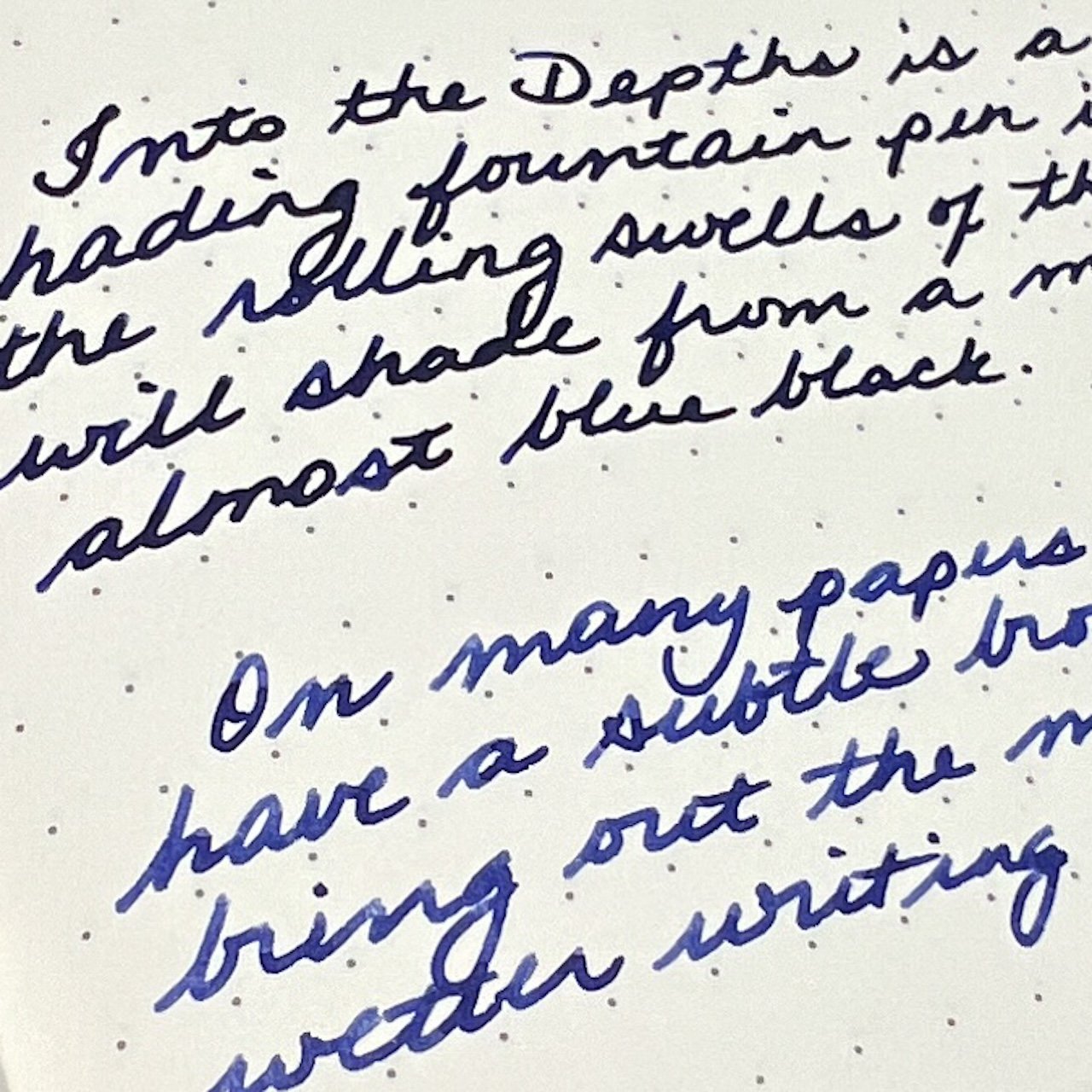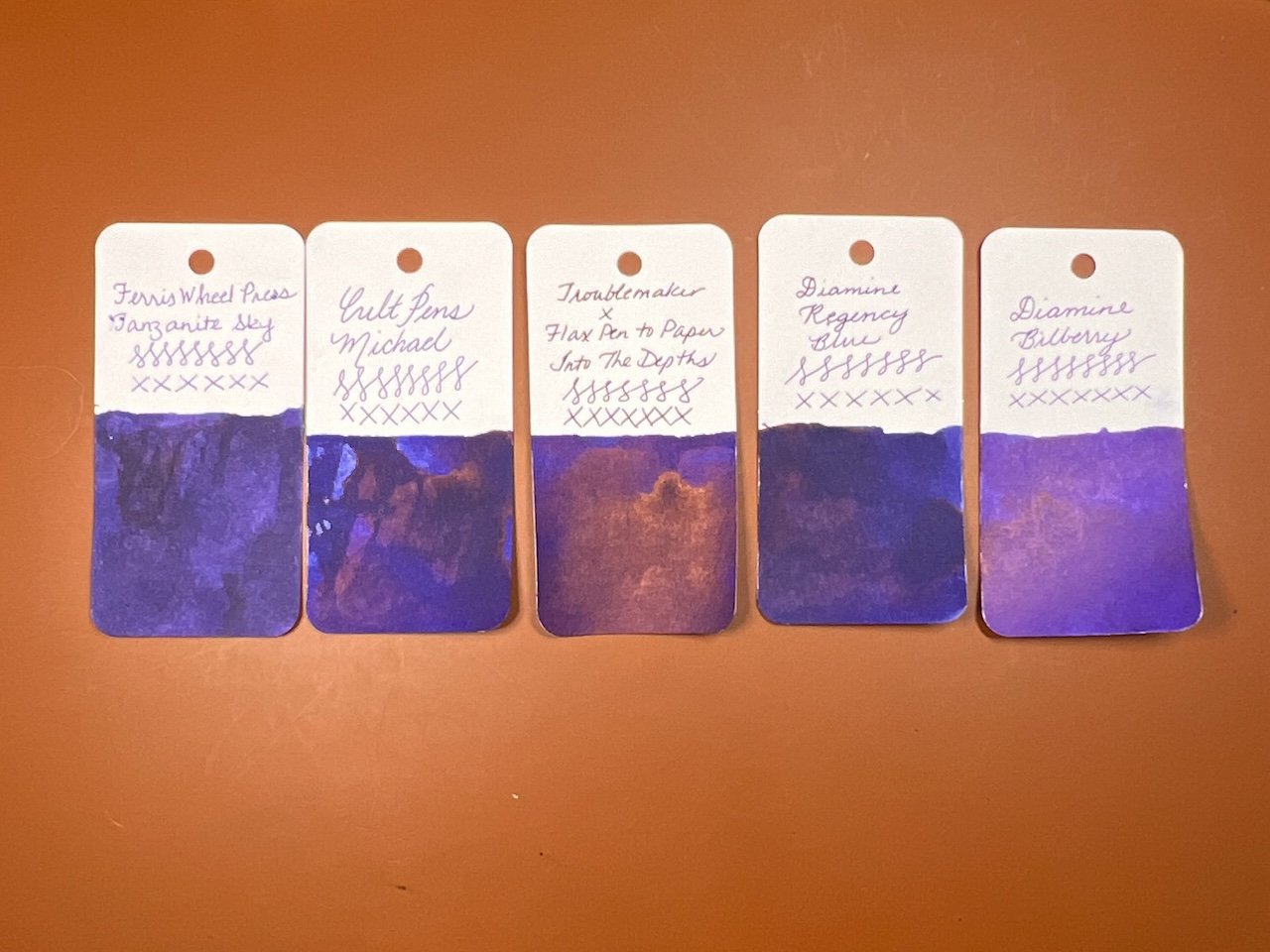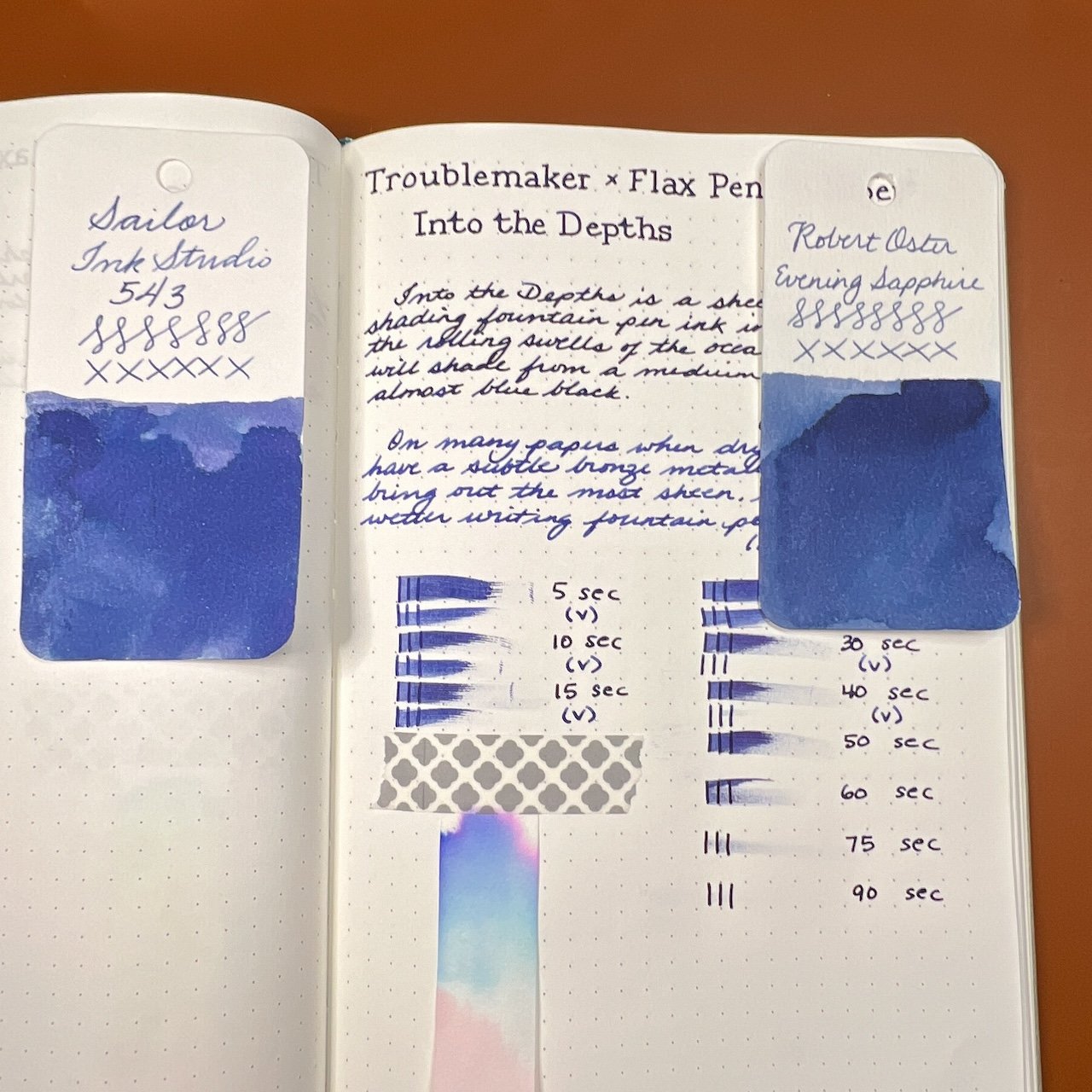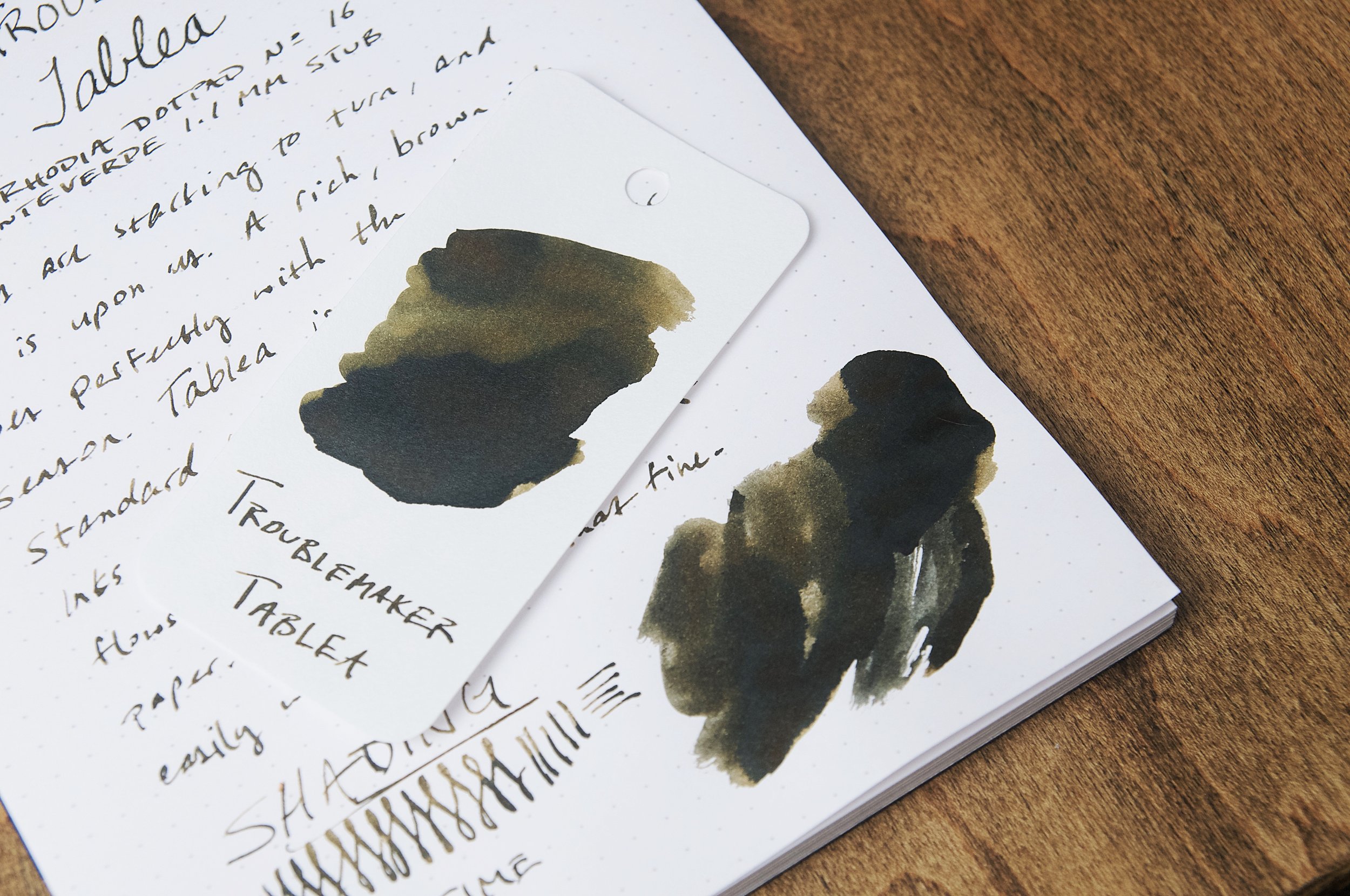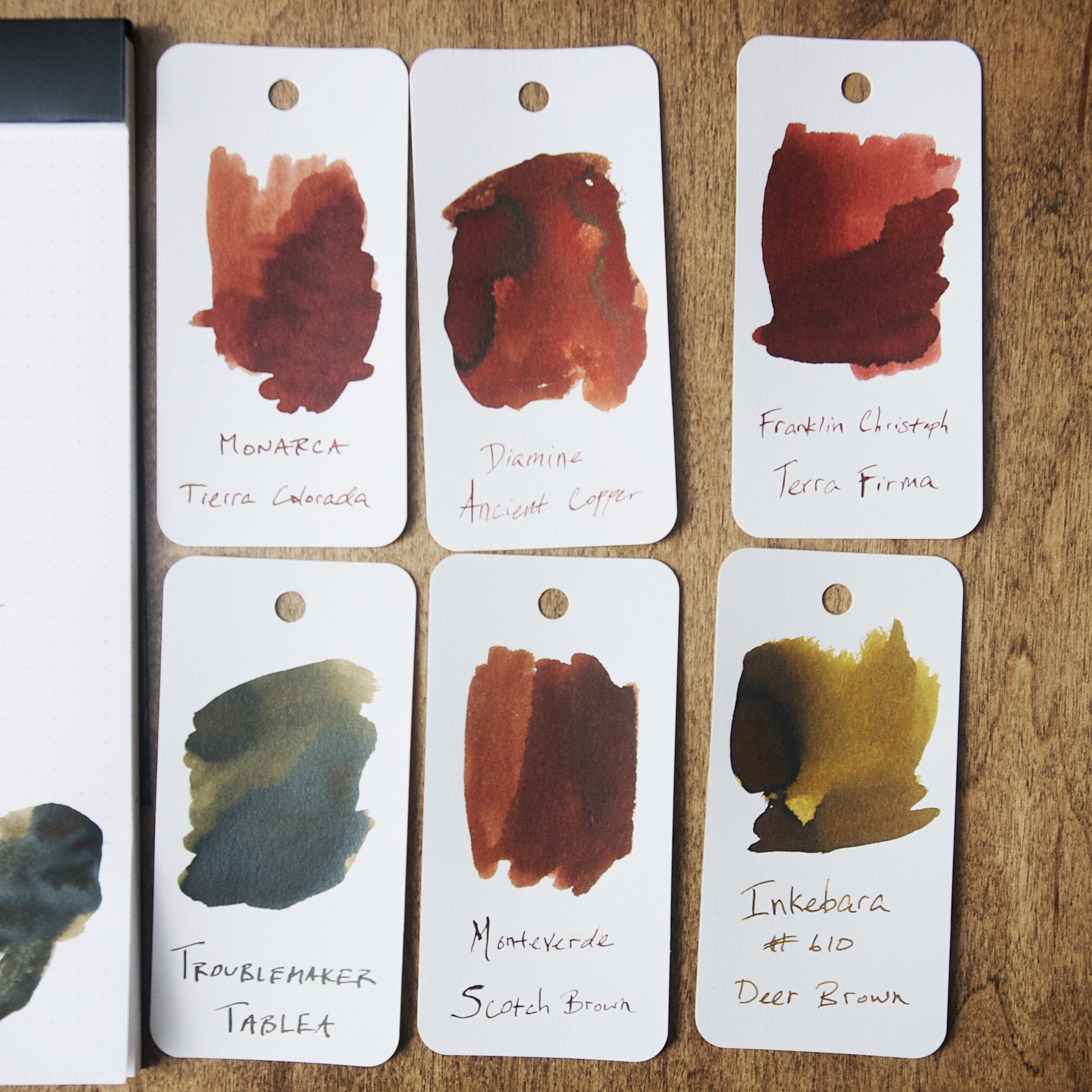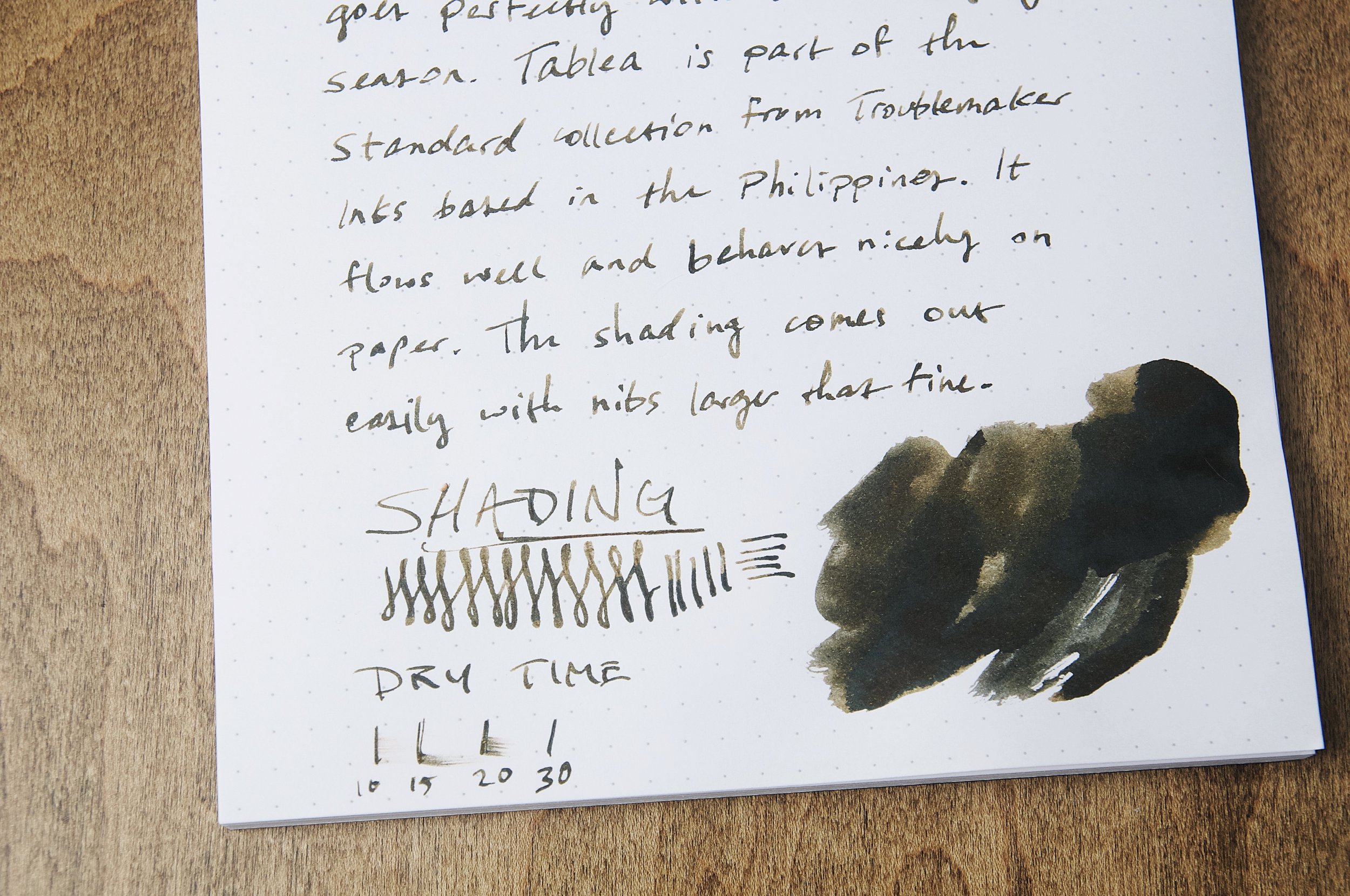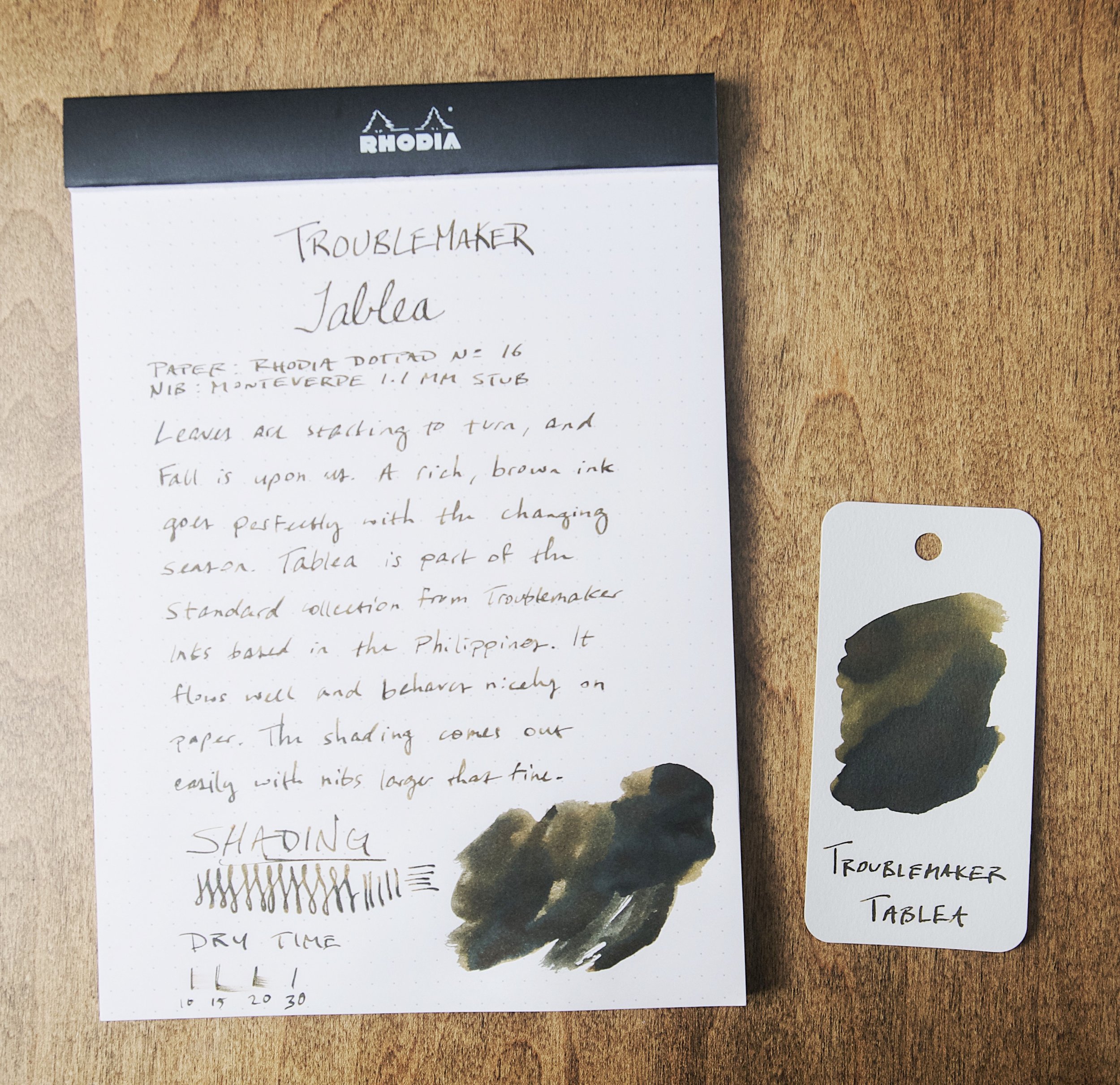How committed are you to fountain pen maintenance? That is the question Platinum needs you to answer before picking up a bottle of Chou Kuro, which, according to them, is the blackest black ink ever produced for use with fountain pens. With a catch.
“Careful maintenance is required to ensure that “Chou Kuro” ink stays intensely black. PLEASE USE PURIFIED WATER, DO NOT USE TAP WATER WHEN CLEANING "CHOU-KURO" INK.”
Emphasis theirs.
Many of us dedicated fountain pen users are used to added maintenance and cleaning routines for specialty inks. Shimmer, sheen, pigment, iron gall - any ink in those categories requires you to pay more attention to your usage and cleaning regimen. No inks, at least that I am aware of, suggest to use distilled water over standard tap water. How intense is Chou Kuro?
Ink swabs made with Kakimori Stainless Steel dip nib on Col-o-ring cards.
According to Platinum, it provides “intense blackness” on the page, and I can’t argue with that. I have shockingly few black inks on hand to compare to Chou Kuro, but one look at the pictures and I’m certain you could pick it out of the lineup if I removed the descriptions.
Of the inks I had on hand, Kyo No Oto Nurebairo is the next darkest, with Pilot Black possibly darker than Platinum Carbon Black? They are different types of inks - the Pilot a basic dye ink, and the Platinum a pigmented ink - and dry a bit differently, but are surprisingly close. Sailor Nano Black isn’t even under consideration with the rest of the group.
Cotton swabs on Kokuyo KB paper.
So yes, Chou Kuro is that black. And the flat, matte-like finish when it dries keeps it that way. There is no sheen to reflect light off the ink at any angle.
Ok, so it’s as dark as I have seen from a fountain pen ink, but how does it write from a nib?
I filled two pens with Chou Kuro: a TWSBI GO with an Extra Fine steel nib, and a Nahvalur Original Plus with a Medium steel nib. I wanted to try a couple of different line widths with an ink like this, and the clear winner was the wider nib of the Nahvalur.
Consistently inconsistent with the TWSBI GO EF.
With the TWSBI GO EF, my lines were inconsistent. If I wanted to wipe down the nib more between uses, or really prime it before and during writing, the flow may have been better, but I wanted to keep it an “uncap and go” experience. When I uncapped the Nahvalur, the Medium nib flowed right from the start. There was no dryness, and no skipping, even after letting the pen sit for 20 days between uses.
I could make this Nahvalur pairing permanent.
The delay between uses was purposeful, and I found no difference in either pens performance no matter if I let the pen sit for an hour, or a week. That was a pleasant surprise.
Would cleaning the blackest black ink from these pens surprise me as well? Yes. Total time inked in both was close to 30 days, and they both cleaned flawlessly. I purposefully chose these two pens because of their clear barrels so I could see if there was any staining. Neither showed any inky remnants, and took no more time to clean than any standard ink cleaning. And yes, I used tap water from the sink. I’m probably on a watchlist somewhere now.
Spotless.
The only cleaning issue I saw was with my Kakimori Steel Dip Nib. I would dip it in the ink, write, wipe it off with a wet paper towel, and let it sit for a couple of hours before fully rinsing it. I could see the black ink sitting in the grooves, but I had no problem taking a brush to it to clean it out better. Next time I’ll keep a small cup of water next to me when I use the dip nib.
For an ink like Chou Kuro, waterproofness is an important feature. They didn’t put in all of this work to not have it be permanent. I swabbed each ink on Kokuyo KB Paper, let it dry, dropped a spot of water in the middle of each swatch, and lifted the paper to have the water run down. The three pigmented inks - Chou Kuro, Sailor Nano, Platinum Carbon - all behaved as expected, as did the two dye-based inks with their large runoff. More testing and time is needed to see the full permanence results, but as an initial look it works as expected.
The main expectation of Chou Kuro is that it is the blackest ink you can use in a fountain pen. I think they succeeded with that, but here are a few tips to keep in mind if you are considering it:
— Use Chou Kuro in a pen you can take apart to clean.
— Lean towards wider nibs for better ink flow.
— Ink it, and use it. Don’t let it sit.
— Clean it often. Commit to distilled water if you will be using it in your regular rotation.
In short, be particular with Chou Kuro. Have a usage and cleaning plan, and stick to it. That’s good practice for any fountain pen and ink combination, but especially this one.
Platinum Chou Kuro runs $60 for a 60 ml bottle, so that is another commitment you will need to make. $1/ml is a price point we have seen before, but not usually in this capacity. In comparison, Platinum Carbon Black is almost half the price. Yes, Chou Kuro is darker, but is it worth the added hassle? In a few cases, yes, I can see a recommendation being made. Otherwise, I’d chose Carbon Black and feel comfortable with that decision.
If you have read this far, be sure to check out more reading from Platinum, as they have broken down the science behind Chou Kuro) to support the claims they are making.
(JetPens provided this product at no charge to The Pen Addict for review purposes.)

